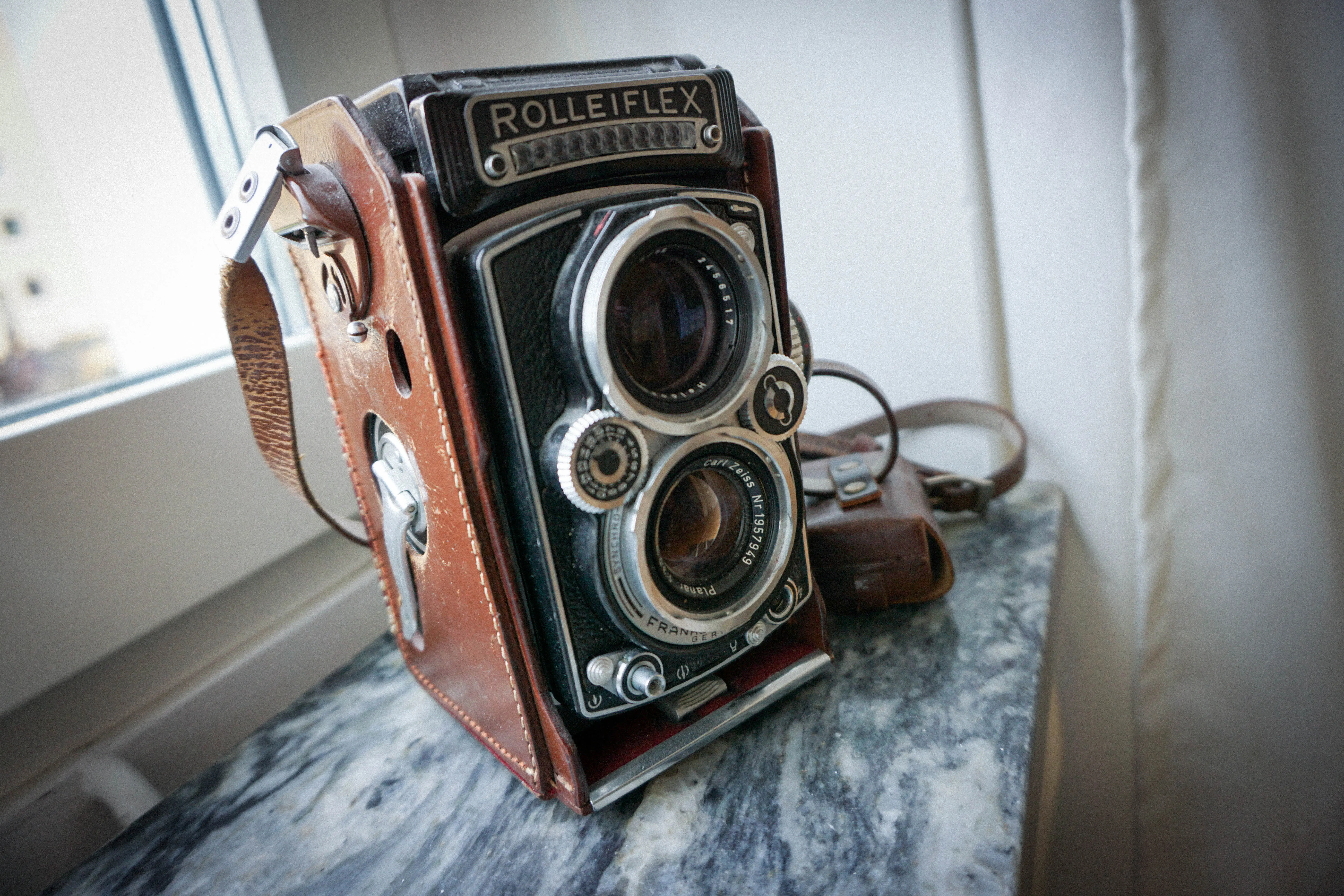The Camera

This post was first published for a course project over at Skillshare. The assignment was to write a 500-word essay about one of my objects.
When I was 16 years old I was rummaging around in the cellar of my diseased grandparents. I was searching for something that could tell me more of their time. Something that would help me keep the connection.
I found a couple of strange hats, purses and piles of clothes. But this was not what I was after, I wanted an object, something that I could keep and make mine. In one dark corner of the room, on the top shelf, I found a brown box labeled “Photos”. I dusted it off and within found an old camera. This was it!
I had actually just bought my own first digital camera, a Sony 3.2 MP, in my quest to start capturing life. As I found out, my grandfather had also been an avid photographer and was usually seen lugging around with this Rolleiflex on his stomach. It was a thing I could relate to. It looked so enchanting with all its knobs and wheels and lenses, housed in this brown leather case. I had no idea how it operated, it looked as if it were from ancient times. The thing that struck me most was its weight, you could tell by its solid build that it was a quality product in its time.
This camera has followed me since and I always keep it in sight. I see it as an object of beauty, a product of fine mechanical craftsmanship. The Rolleiflex camera series started manufacturing in Germany in the late 20’s and was actually produced all the way to the 21st century.
One interesting aspect is that the viewfinder is placed on top so you’re actually “looking down” at your objects. Your camera lens is facing one direction, you are looking in another. This makes it easier to come close to people since they don’t feel you’re looking directly at them. They won’t even recognize if you take a picture of them, when you snap a photo it seems as if you’re looking to the floor.
This was just the thing I can see my grandfather appreciating. I can imagine him walking around in the city, finding the camera in a shop window, recognizing its value and picking it up maybe in the late 60’s or the early 70’s. He then used it frequently to document his daily life, vacations, people, children and birthdays until he later died in 1987. The same year as I was born. Thanks to this device, he could tell me a little bit of the time he lived in, how he was like, what he thought important.
The camera has somehow turned into a symbol. A symbol, not just of my grandfather, but also his need for capturing, collecting and structuring his world into images. Something that has transcended down to me. It also reminds me of the longevity in quality of worksmanship. It still works as good as new while my much younger digital camera has been replaced many times over.